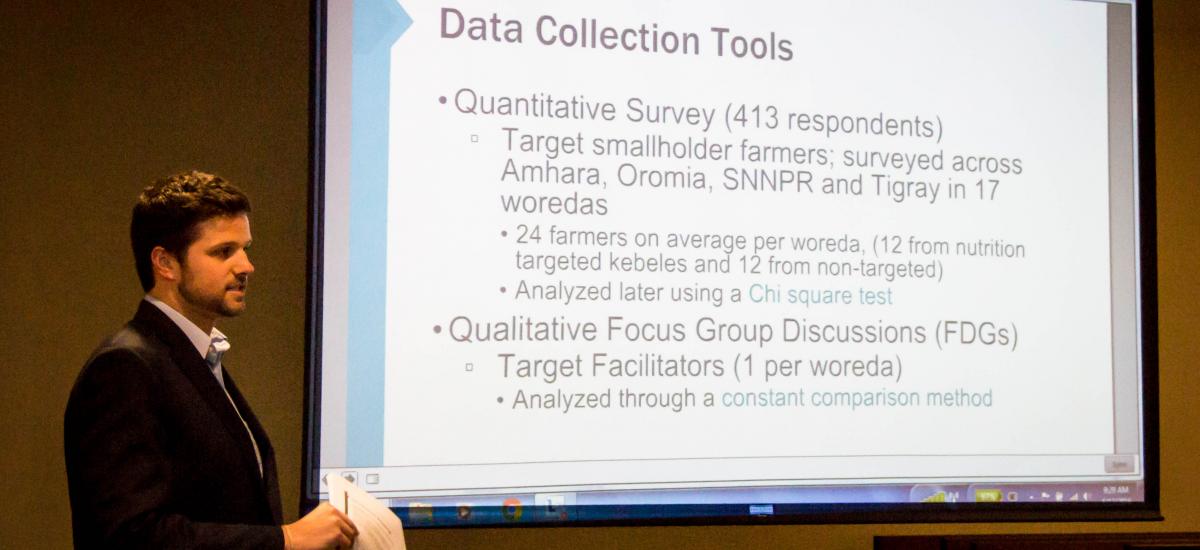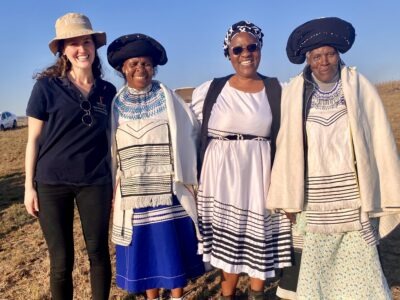
The “Nutrition-Sensitive Agriculture Farmer Training” manual developed for and piloted in Ethiopia by our Agricultural Growth Program-Agribusiness and Market Development (AGP-AMDe) project was released to the public today at ACDI/VOCA’s Headquarters by Senior Technical Director of Nutrition Ladd and Project Coordinator Jason Hillis. Its cascade training model targeted farmer members of cooperative unions to move them along the agriculture-to-nutrition pathway to improved food consumption and dietary diversity.
The five-year USAID Feed the Future AGP-AMDe project was tasked with reaching 1.2 million farmers. Its nutrition-sensitive agricultural training began late 2012 and included workshops to increase participants’ nutrition knowledge via social and behavioral change messaging through the use of appropriate agricultural analogies. Training activities, which targeted three nutritional facets (dietary diversity, growth stages, and hygiene), were participatory and drew on participants’ prior knowledge.
Nutrition Training through Agricultural Analogy
The trained lead farmers were expected to, in turn, train 20-40 other farmer co-op union members. The project utilized the STICKS (Scalable Tracker for Imparting Certified Knowledge and Skills) visual tool to track participation and ensure content integrity. By project conclusion, 50,000 smallholder farmers had been trained, 55 percent men. The project purposely targeted men as they are households’ gatekeepers, traditionally deciding how money is used and food allocated within the household.
Read about the 2015 Integrated Nutrition Conference and Nutrition Sensitive Agriculture
Read more about the program
Determining Effectiveness
The project used a Knowledge, Attitude, and Practice (KAP) assessment methodology to determine if the target audience had received its messages and if the training had improved participants’ diet diversity, hygiene, and agricultural practices. The quantitative assessment analyzed a Chi square test to determine the odds ratio related to the likelihood that a trained individual would practice these new approaches. The qualitative assessment noted the beginnings of behavioral change, such as people selecting a few nutritious products for household consumption before market sale.
What Worked, What Can Be Improved
The cascade training model was successful in its amplification of messaging despite limited resources. Translating nutritional messaging via agricultural analogies catapults new ideas and transfers them laterally. The presenters recommend longer trainings, translating the STICKS materials into more local languages, helping smallholders access quality seeds, and use of additional hands-on approaches, including cooking demonstrations and a cookbook.
The training manual is available here. The parts of it that need to be adjusted to new contexts are highlighted in yellow. We’d love to hear from you if you adapt it for your project.
Read more about our work in Ethiopia
Read more about AGP-AMDe
Read more about our nutrition work





